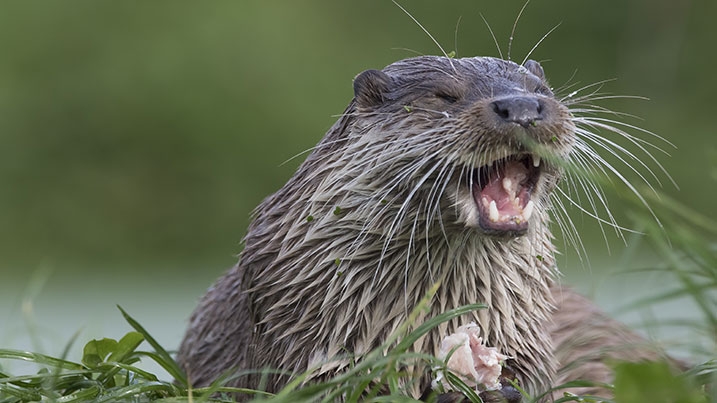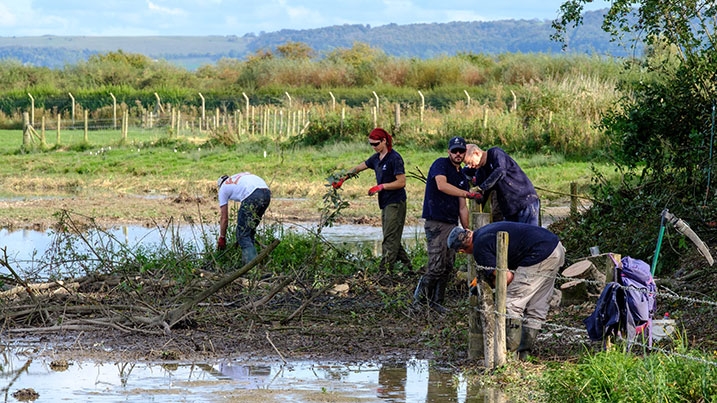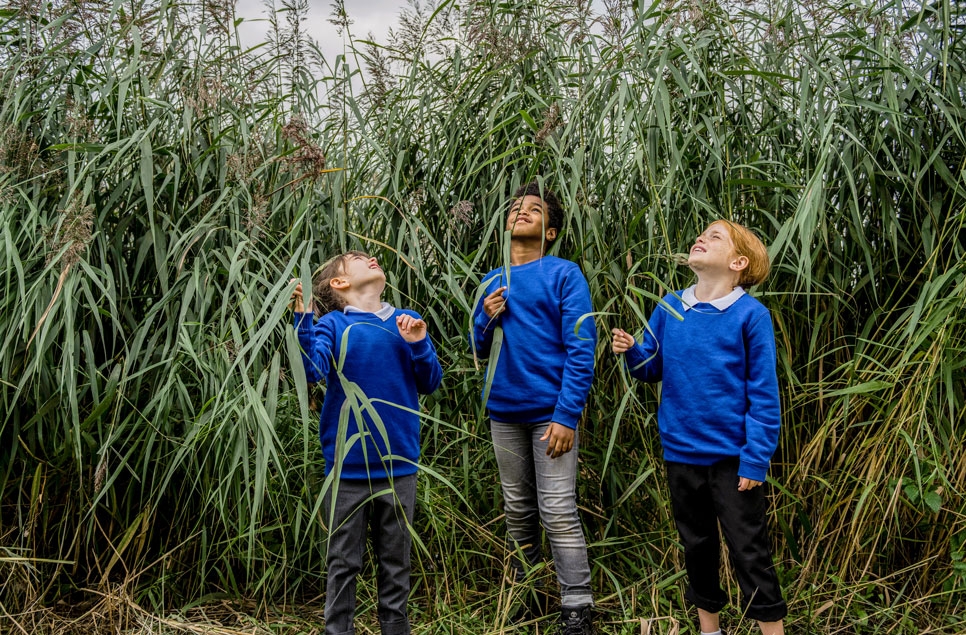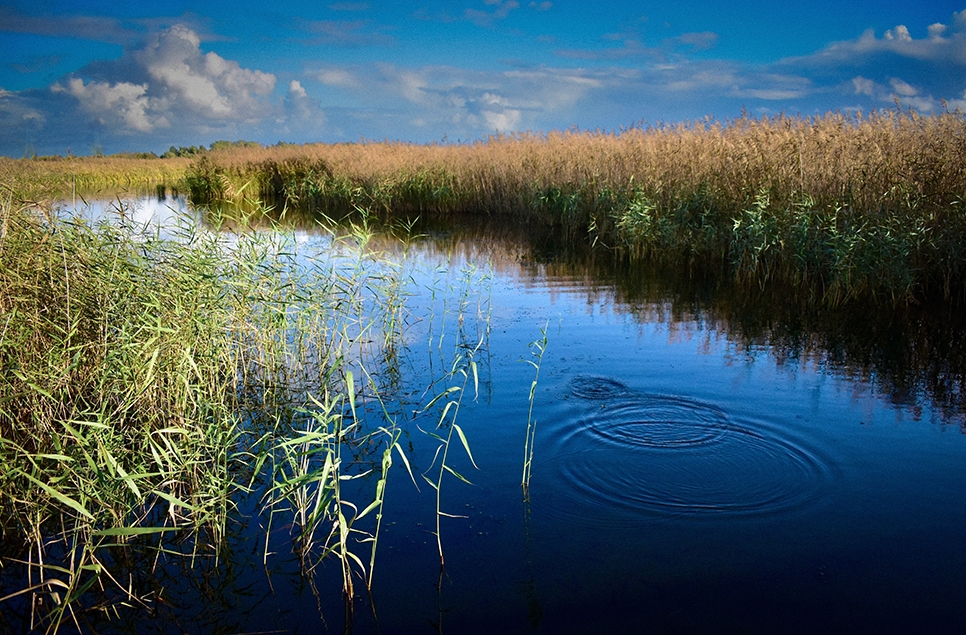Why are apex predators like otters so important for the health of our wetlands?
When we think of predators, it’s typically images of the lion stalking its prey on the African savannah that come to mind. Or maybe packs of grey wolves tracking elk across the snow in Yellowstone National Park.
These might be the ‘celebrity’ predators of the natural world, but every ecosystem has its own top, or apex predator. Even wetlands. To find out more, we caught up with WWT’s Head of Conservation Evidence, Geoff Hilton….
What are the apex or top predators in a wetland?
Wetlands play host to a range of apex predators. In Florida’s Everglades you’ll get alligators and crocodiles. In the wetlands of the Amazon you’ll find anacondas and jaguars.

You’ll also find apex predators in the UK’s wetlands. Otters are one of the top wetland apex predators.
What is an apex predator?
An apex predator is a species that sits at the top of its food chain or web and has no natural predators. They’re often the largest or strongest in their habitat. They’re carnivorous and have often evolved special adaptations such as sharp teeth, powerful jaws and keen senses to help them actively hunt and kill their prey.

How can apex predators help maintain a healthy ecosystem?
We’re understanding more and more about how apex predators of many sorts can help create and maintain diverse and healthy ecosystems. Why? The bottom line is our wildlife developed in the presence of these predators. So, it’s to be expected that they’ve evolved to thrive in an ecosystem where there are apex predators.
Can you give a specific instance of where this has happened?
Let’s take the example of the reintroduction of wolves into Yellowstone National Park in the United States.

Wolves were reintroduced to Yellowstone in 1995 and began to prey on elk. As a result, the numbers of elk fell substantially, reducing overgrazing of the park’s vegetation.
How did the wolves create a landscape of fear?
The presence of the wolves also then changed the behaviour of the remaining elk, which started to avoid areas where they were more likely to encounter wolves. The term ‘landscape of fear’ was coined to describe how the elk changed their use of the landscape in space and time to reduce their chances of being predated.
The interesting consequence of this was that the park’s vegetation became more varied. Woodland regenerated in areas the elk started to avoid. In areas where the elk felt safe, their grazing helped maintain more open vegetation. This increased variety and recovery of vegetation, in turn provided habitat for species from songbirds to beavers.

And the ‘cascade of effects’ went even further. Where beavers flourished, they created a home for fish and helped raise groundwater, reducing the impact of droughts.
What about otters? Are they the ‘wolves of the wetland’?
In the case of our familiar otter, it seems their presence in UK wetlands, reduces abundance of the introduced and invasive American mink. This may in turn reduce the impact mink have on their prey, most notably the highly threatened water vole.
The American sea otter – a different but related species – can create some really interesting effects. They help maintain kelp forests by predating on the sea urchins that munch kelp. They also support seagrass meadows by eating the crabs that eat the invertebrates that eat the algae that grows on and smothers seagrass!!

Kelp forests and seagrass meadows are great for fish and great for burying carbon. So this shows how a predator can really benefit an ecosystem.
Do predators ever kill for ‘fun’, or is it always for food?
Some predators have been observed killing more prey than they can or will eat. This behaviour is known as ‘surplus killing’, for example when a fox gets into the hen-house.
It’s also been seen in American mink, when they reach an island with nesting gulls or terns, with devastating consequences for some populations in Scotland.
It’s pretty much impossible to know why predators sometimes do this. It’s really a moot point as to whether they do it ‘for fun’. What does fun mean to a wild animal? And is there any point in making moral judgements on animals?
Why might they behave like this?
We have some ideas about why this behaviour has evolved.
Firstly, being a successful predator needs practice, and killing multiple prey is potentially good training.
Secondly, and here we are getting a bit gruesome, some parts of their prey are more tasty and nutritious than others. So, if it’s easy enough to do so, sometimes predators might kill a lot of prey and then eat just the favoured bits of each one.
Thirdly, some predators store prey for later, so what looks like surplus killing is in fact filling the larder.
Perhaps the key to this is that in natural ecosystems it’s rather rare for lots of prey to be catchable in one time and place, so surplus killing is unusual. But we humans sometimes create a situation where the predator is faced with a large number of prey that can’t escape. For example, otters sometimes surplus kill when they manage to get into fish farms or koi carp ponds.
It seems possible that predators are simply not wired to deal with this situation in what we might call a sensible (or moral!) way, because they have not evolved with it. Maybe they’re responding to impulses to practice killing or to fill the larder, but it goes haywire in an artificial situation.
What is WWT doing to help bring missing apex predators like the otter back to the UK’s wetlands?
Digging for otters
We’re helping otters by creating bigger, better and more connected wetlands. By restoring and creating ditches around our reserves, we’re making it easier for them to move around our wetlands. A male otter’s territory can be up to eleven square miles. So, by making more wetlands, connecting them up and encouraging more eels and fish into the area, we’re making it easier for otters to hunt and get around. We’re also enticing them with well-maintained reedbeds, which are popular with otters because of their secluded nature and good fish stocks. We’re also providing man-made otter holts.

If you’d like to help support projects like these, join We Can Collective – a mighty force for good, uniting people who want to be part of the solution.
Join Today


